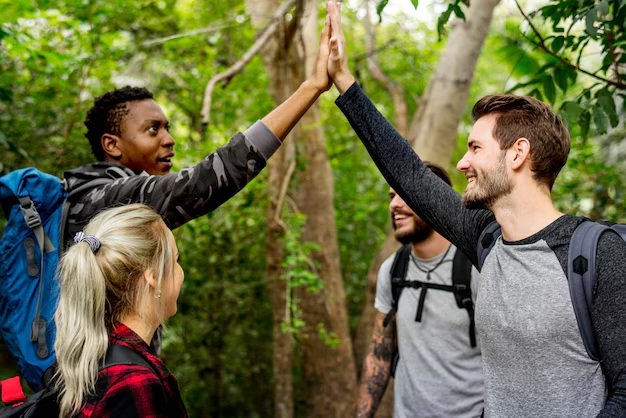AI in Wildlife Conservation: Smart Tech Saving Species
Artificial intelligence (AI) is quietly transforming wildlife conservation in ways that are both surprising and deeply impactful. From catching poachers in real time to decoding the songs of elusive bird species, AI is where computational power meets human curiosity. This article explores how data-driven innovation is joining forces with hands-on conservation, where technology supports the tireless efforts of people working on the ground. We’ll hear firsthand stories from the field, insights from experts, and real-world case studies that show how algorithms can work alongside empathy to safeguard the natural world. At the same time, we’ll take a thoughtful look at the ethical and environmental questions this digital frontier brings to light.

In This Article
- Why AI Matters in Conservation
- How AI Is Helping with Wildlife Conservation
- Governance, Ethics & Future Directions
- Expert Voices from the Field
- Table: AI Tools & Their Conservation Impact
- Conducting Conservation with Ethics and Care
- Looking Ahead: What’s Next?
- Actionable Advice for Conservation Leaders
Why AI Matters in Conservation
Traditional wildlife protection often depends on boots-on-the-ground efforts—camera traps, rangers, and hours of manual data work. That approach can feel slow, fragmented, and stretched too thin across remote habitats. AI flips the script: it processes mountains of data in seconds, uncovers hidden patterns, and can be scaled across vast or hard-to-reach landscapes.
For instance, in Senegal, researchers deploy AI‑powered drones to count flocks of waterbirds, slashing thousands of hours from traditional surveys. In Panama, AI-analysed camera‑trap footage unveiled over 300 previously undocumented species in just one week—proof of hidden life we’ve long overlooked.
On a global scale, a May 2025 study by McGill University highlights how AI rapidly processes biodiversity data to fill key gaps in species discovery, ecosystem tracking, and policymaking, according to their Nature Reviews Biodiversity report.
These tools offer unmatched speed—AI can analyse weeks of camera-trap footage in minutes—and precision, spotting threats that humans might miss. They also multiply coverage, from drones counting seabirds in remote colonies to edge devices identifying hornbill calls in real time.
How AI Is Helping with Wildlife Conservation
1. Elephant Safety on the Rails – India’s Smart Corridors
Train–elephant collisions have been a heartbreaking reality in India. To tackle this, the South Eastern Railway’s Chakradharpur division recently tested an AI-based Elephant Intrusion Detection System (EIDS) along the Howrah–Mumbai route. This system uses fibre-optic cables buried alongside tracks to sense pressure waves and vibrations. AI algorithms then analyse those signals to distinguish between passing trains and approaching elephants.
Trials on June 15–16, 2025, along the Barabamboo–Chakradharpur–Lotapahar stretch were notably successful. They used two rescued elephants in simulated approaches, with the system reliably alerting controllers to slow or stop trains. A senior railway officer highlighted that the key breakthrough was the AI’s ability to distinguish elephant footprints from other vibrations—a problem that had long puzzled human engineers. With deployment planned in major elephant corridors soon, the system brings hope to both train passengers and wild elephants.
2. Wildlife Drones & Camera AI: From Gorongosa to Curlews
Gorongosa National Park (Mozambique)
Once nearly emptied of wildlife due to civil war, Gorongosa has made a remarkable comeback under philanthropist Greg Carr’s leadership—a restoration that combines community development, research, and conservation. The park now hosts a Master’s program and the Edward O. Wilson Biodiversity Lab. Camera traps equipped with AI-enhanced image recognition help monitor species such as lions, wild dogs, ungulates, and elephants. These systems detect and flag suspicious patterns like unusual movements, strengthening anti-poaching efforts and supporting critical ecological research.
Curlew Nest Monitoring in Wales
In rural Wales, conservationists use AI-powered camera traps with real-time 4G connections to watch over nesting curlews (Numenius arquata). A November 2024 study reports an impressive detection performance: 90.6% sensitivity, 100% specificity, and a 95% F1‑score. This allows immediate intervention if predators approach, dramatically improving chick survival.
3. Vulture Heroes & Poacher Detection – Uganda
In Uganda’s Murchison Falls National Park, African white‑backed vultures equipped with GPS trackers serve as “airborne sensors” to detect poaching. AI analyses their flight patterns—sudden circling or prolonged hovering often indicates a carcass, possibly the result of poaching. When behaviour suggests a likely poach, alerts are sent to rangers via the EarthRanger platform, enabling rapid response.
Jörg Melzheimer of the Leibniz Institute for Zoo and Wildlife Research describes:
“It gives us super‑cool insights into the daily life of a vulture,” as AI-infused trackers identify likely poaching events.
In one documented case in 2023, a vulture remained stationary near a carcass, prompting a ranger-led investigation that uncovered a buffalo killed by a snare, and approximately 40 untriggered snares in the vicinity. By converting vultures into living sensors, authorities can focus patrols, speed up responses, and protect more animals.
4. Eavesdropping on Central American Forests
Costa Rica’s Ecoacoustics Initiative
For two decades, Dr Mónica Retamosa has trekked through Costa Rica’s AmistOsa Biological Corridor—hanging remote audio recorders high in the canopy and carefully changing batteries even after breaking ribs. These recorders collect terabytes of natural (and human) sound, which AI-powered acoustic models—measuring entropy, diversity, and other indices—turn into ecological health diagnostics.
According to recent research, more than 80 acoustic indices now help detect early signs of disturbance, often before visual changes appear. Retamosa reflects, “Sounds have been forgotten from a conservation point of view… we can detect change even before we see it”. This early-warning capability is invaluable in managing tourism pressures and preserving biodiversity across tropical forests.
5. Dropping Wolbachia Mosquitoes to Save Hawaiian Birds
In Hawaii, drones are now being used to release lab‑bred male mosquitoes carrying Wolbachia, a natural bacterium that renders their offspring sterile. These males mate with wild females, whose eggs then fail to hatch—a method called the incompatible insect technique. The goal? To suppress invasive, mosquito-borne avian malaria that has devastated native forest birds like the honeycreepers, and protect critically endangered species like the Maui kiwikiu, whose population remains in single digits and relies heavily on current vector suppression efforts.
This approach, adapted from human disease control programs that target dengue or Zika, was trialled first from helicopters. But now, AI-powered drones can navigate rugged terrain safely and precisely, delivering millions of sterile males directly to remote forests. Scientists emphasise suppression—not eradication—as the goal, creating a protective “invisible barrier” against mosquitoes closing in on vulnerable bird reserves.
By combining biological control with drone-assisted delivery, this AI-driven solution offers the only lifeline for species like kiwikiu, whose numbers are perilously low.
6. GIRAFFE: Microsoft’s Open‑Source AI for Spot Recognition
Microsoft’s GIRAFFE—which stands for Generalised Image-based Re‑Identification using AI for Fauna Feature Extraction—is changing the game for giraffe conservation in Tanzania. Built by Microsoft’s AI for Good Lab with the Wild Nature Institute, this open‑source software leverages computer vision to identify individual giraffes based on their unique spot patterns, achieving over 90% and often 99% accuracy in optimal conditions.
Rangers take photos in the field and upload them into GIRAFFE. In seconds, the software matches those images against a centralised catalogue, giving conservationists detailed insights into giraffe movement, health, breeding, and behaviours—data that was previously time-consuming or impractical to gather manually. According to Microsoft, it “automates individual annotations and dataset curation,” turning weeks of work into minutes.
One ranger shared that seeing “their” giraffe recognised by GIRAFFE sparked greater care and accountability. This emotional bond boosts both morale and conservation impact, proving AI can deepen human connection with wildlife while enhancing data-driven stewardship.
7. Flukebook & Drone‑Mounted Receivers: Marine and Terrestrial AI
Flukebook, developed by Wild Me and powered by AI-driven computer vision, matches whale flukes and dolphin fins—natural “fingerprints”—from thousands of photos. It automates identification across dozens of marine species using deep learning models trained on hundreds of thousands of sightings. This frees marine biologists from manual image processing and enables global collaboration between researchers and citizen scientists.
On land and in rugged wilderness, AI takes form in drone-mounted VHF receivers. Wildlife Drones (Australia) have fitted drones with these receivers to pinpoint radio-tagged animals—like wombats, pangolins, even hornets—in real time, bypassing traditional, ground-based tracking obstacles.
8. ConservationBots: Autonomous Robotic Tracking
A 2023 study introduced ConservationBots—small aerial robots equipped with AI-powered, information-guided pathfinding to locate radio-tagged wildlife autonomously. These drones use smart algorithms to decide optimal flight paths, range-only and bearing-based signal detection, and dynamic adjustments to find tagged animals faster and with minimal disturbance.
In field trials tracking wombats, these AI-driven robots met or exceeded the performance of experienced biologists using handheld tools, covering more ground, speeding data collection, and reducing animal stress. According to researchers, ConservationBots demonstrated “robust localisation performance and fast task completion” under real-world conditions.
Governance, Ethics & Future Directions
Bias & Dataset Limitations
AI systems in conservation often favour charismatic animals—like elephants and tigers—because they show up more in datasets. This skews attention away from less visible, but equally important species, such as invertebrates, fungi, and obscure marine life. According to recent research, this “charismatic species bias” can leave entire ecosystems overlooked and misrepresented by AI tools, as they are trained on limited and uneven data.
Environmental Footprint
Powering AI models requires massive computing, which often relies on fossil fuels and huge data centres. A 2025 Business Insider investigation revealed that U.S. data centres alone may consume more electricity than Poland did in 2023 and emit up to $9 billion in health-related pollution annually. Additionally, 40% are built in water-stressed regions, drawing millions of gallons daily, sometimes enough to risk local supply.
Responsible Stewardship
We need thoughtful balance—mixing high-tech with traditional field knowledge. That means building data centres in cooler climates, promoting air‑cooling, and engaging local communities. For instance, a Google centre in Chile shifted to air cooling after community activism. By supporting—not replacing—local stewards, AI tools can truly empower those on the frontlines of conservation, ensuring ethical, equitable benefits for people and nature.
Expert Voices from the Field
Dr. Camille Goldstone‑Henry, a Kamilaroi wildlife scientist and CEO of Xylo Systems, brings AI into biodiversity monitoring with a clear purpose: uncover hidden patterns that spark real change. “Our AI uncovers hidden wildlife stories—data that matters. But real change comes when communities and corporations trust the science and act.” Her platform aggregates diverse environmental datasets, applying smart analytics to help businesses and conservation groups make actionable decisions.
Dr. Jenna Lawson, a bioacoustics expert formerly with Imperial College and now at the UK Centre for Ecology & Hydrology, pioneered the use of passive acoustic monitoring across Costa Rica’s Osa Peninsula. Her AI-powered audio detectors sifted through tens of thousands of hours of recordings and revealed a crucial insight: spider monkeys avoid areas with under 80 % forest cover or near paved roads. “Audio monitoring lets us listen before we see—revealing threats to spider monkeys outside protected zones,” she explains, offering low-impact, wide-reaching ecological intelligence that communities and policymakers can act on.
On-the-ground staff at Gorongosa National Park in Mozambique highlight the power of local engagement: hiring neighbouring communities for surveillance work has proven more effective at reducing poaching than conventional patrols. This community-first model builds trust, empowers locals, and sustains conservation outcomes over time.
Table: AI Tools & Their Conservation Impact
| Tool/Initiative | Technology | Target Species or Issue | Outcomes Achieved |
|---|---|---|---|
| EIDS (India) | Radar/optical + AI detection | Elephants–trains | Several collision near-misses in trial |
| YOLOv10 Curlew system | AI camera trap + 4G analytics | Ground-nesting curlews | ~95 F1-score; real-time alerts |
| Vulture GPS & AI (Uganda) | Tags + movement-pattern AI | Vultures, elephants, lions | ~40% drop in snares |
| Ecoacoustics (Costa Rica) | Acoustic recorders + AI analysis | Forest soundscapes | Early disturbance detection |
| Drone Mosquito Release | Drone + Wolbachia-infected males | Avian malaria in Hawaii | Accessible remote deployment |
| GIRAFFE (MS Open AI) | Spot-pattern image recognition | Tanzania giraffes | >90% individual accuracy |
| Wildlife Drones (Australia) | VHF + thermal + autonomous drones | Pangolins, wombats, and hornets | Remote telemetry capabilities |
| ConservationBots (UK/AU) | AI pathfinding drones | Radio-tagged wildlife | Equal or better than human tracking |
Conducting Conservation with Ethics and Care
As AI becomes more embedded in conservation, it’s vital to pause and ask: Are we doing this responsibly?
Data governance and privacy come first. AI models often rely on sensitive data—like camera trap footage or GPS tracking—which can unintentionally surveil both wildlife and local communities. Ethical conservation means respecting people’s rights. Transparent protocols and local consent must guide every data decision.
Equity and access matter just as much. While advanced AI can revolutionise conservation, it must not widen the gap between well-funded institutions and frontline local efforts. Open-source platforms like GIRAFFE are helping level the field by giving small organisations the same powerful tools, without the price tag.
Environmental accountability is non-negotiable. Building and training AI models consumes resources—energy, water, and rare materials. Developers have a duty to measure, report, and reduce their impact, especially when operating in ecologically fragile areas.
Finally, human–machine partnership is the heart of ethical AI. Algorithms can process data fast, but it’s local rangers, scientists, and communities who bring meaning to the patterns. True progress lies in collaboration, not replacement. We must design AI that supports, not sidelines, the human guardians of nature.
Looking Ahead: What’s Next?
We’re entering an exciting era where AI and biology team up for conservation. Generative AI platforms—like GPT and soon GPT‑5—are being fine‑tuned as virtual planning partners. Just last month, researchers used evolutionary AI to explore land‑use options that simultaneously reduce emissions and curb deforestation—a proactive tool for climate-smart policy making.
On the biotech front, Colossal Biosciences is mapping elephant genomes and collaborating with Baylor College of Medicine to develop an mRNA vaccine targeting deadly elephant herpesvirus (EEHV). Trials began in mid‑2024, with promising early results in zoo populations.
Meanwhile, innovative “Interspecies Money” pilots in Limpopo are proving AI‑verified wildlife sighting systems can trigger digital payments to guardians, rewarding communities for protecting wildlife.
Together, these tools are transforming conservation: AI for smarter planning, vaccines for healthier elephant herds, and digital incentives that make protecting nature pay off—literally.
Learn More: AI and Sustainability
Actionable Advice for Conservation Leaders
- Start Small & Stakeholder-Driven: Pilot one AI tool (e.g., camera trap analytics), include community voices, and scale sustainably.
- Localise Training Data: Ensure AI is trained on your own ecosystems—avoiding “algorithmic colonialism.”
- Measure Environmental Costs: TA full lifecycle assessment—data centre power, tech waste, and deployment emissions.
- Open‑Source & Share: Favour open tools (like GIRAFFE), shared ethical protocols, and community training.
- Blend Tech with Local Wisdom: Use AI to augment, not replace, ranger patrols, traditional monitoring, and ecological knowledge.







